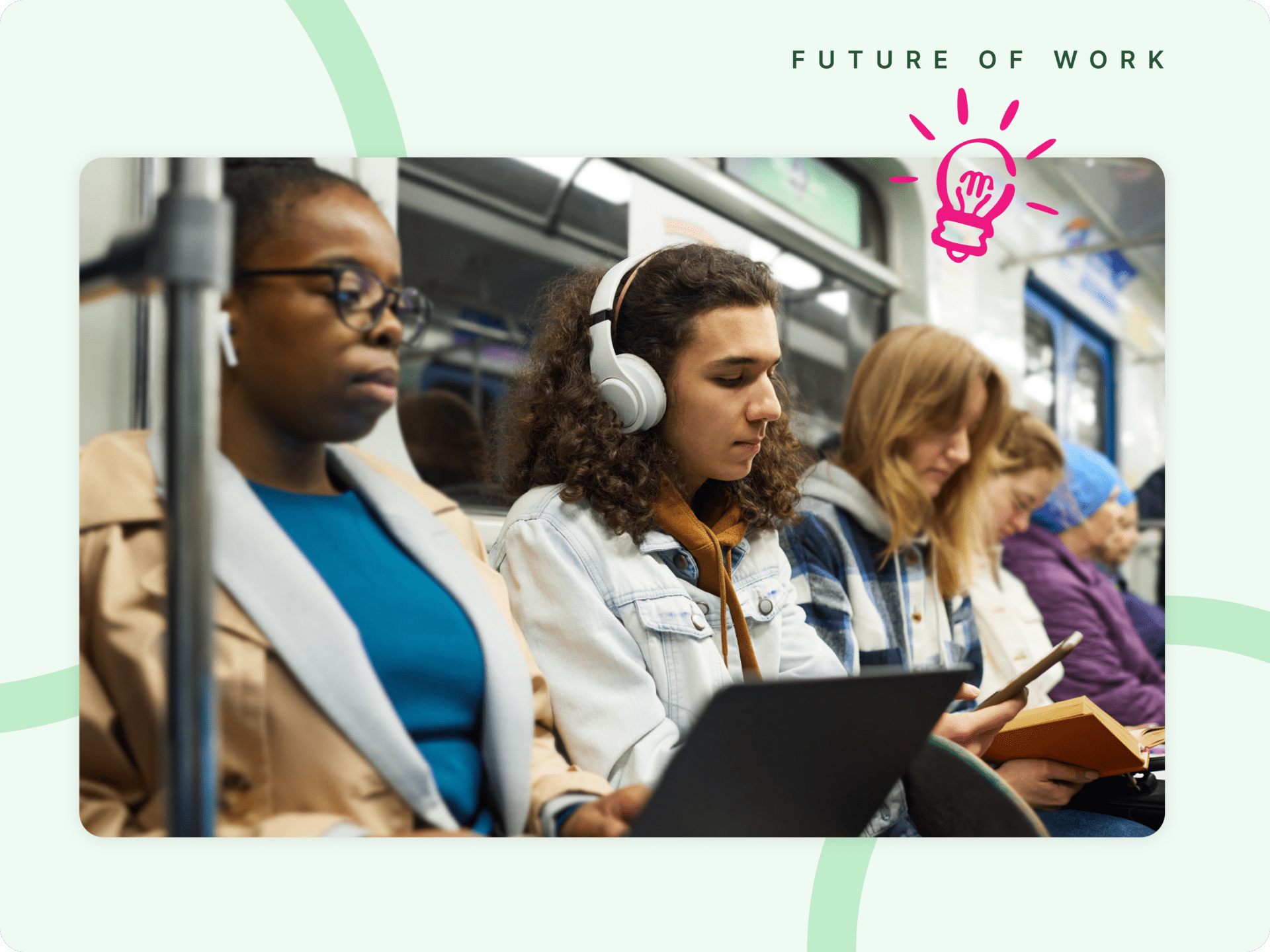The five gears model and hybrid working

The pre-pandemic office was a one size fits all setup. From head-down, focused work to a team brainstorming session, people came in every day, no matter what type of work they were doing. The hybrid revolution has changed all that. For many of us, the working week is now flexible. We can choose where and how we work. We don’t need to be in the same place all week to be productive. In fact, for some types of work, we can be more productive away from the office.
Recognizing different work modes
Understanding your different work modes and how you can maximize their potential will help you get the most out of hybrid. Untethered from the office, you have the freedom to optimize your working day by choosing where you work. If you need peace and quiet, you can work at home. If you need to connect with others, come into the office. But to get the most out of this freedom, you need to have a more nuanced understanding of how you work – enter the Five Gears model.
The Five Gears model
Five Gears model is a powerful and practical framework that defines the five core work modes – or gears – people employ at work. Understanding the model helps leaders and employees maximize their influence and productivity.
Work requires different gears at different times. Think of a classic stick shift car. If you try to start your car in fifth gear, it won’t work. If you stick it in first gear on the motorway, you won’t get far. The model teaches us how to choose the right gear at the right time
Fifth gear is described as focus mode. You’re in the zone and at maximum productivity. You look down, it’s 3pm and you think: “I’ve totally crushed it today”. It’s intense, and not usually sustainable day in, day out. Fourth gear is what people traditionally think of as a day’s work. You’re very busy, multitasking with lots going on. In and out of meetings. You’re working hard, but you can often get to the end of the day and you’ve still got a long to-do list. It’s a productivity gear, but you’re often in reactive mode.
Third gear is a social mode. It’s a place where you’re engaging with people. Meeting people, going for drinks after work, socializing. It’s that all-important ability to make conversation and connect with people on a personal level. When you’re in third, it can go two ways. Sometimes you shift up to fourth and the conversation turns to work. Other times, you shift down to second gear, or connect mode.
Second gear is a non-work mode. It’s about relational depth. It’s where you’re emotionally present with the people that you do work with. It’s where you open up with a colleague about your personal life. It’s the place where you connect on an honest and authentic level.
First gear is another non-work gear. It’s recharge mode. You’re unplugged, relaxing and recharging your batteries, on a physical, emotional, and intellectual level. It could be hanging out with friends and family, going for a walk, or reading a book. The model also includes one final gear – reverse.
The Five Gears and the hybrid workplace
When it comes to the hybrid workplace, companies are working out what role their offices will play in this new world. The Five Gears provide the perfect model to frame the conversation.
In the old days, a lot of employees came into the office to work in fifth gear. Head down, in your cubicle, getting on. The pandemic showed us that people can do fifth gear remotely with a reasonable home office setup. Nobody noticed a difference.
In that sense, fifth gear is unlikely to be the gear of the workplace in the future. You’re not going to commute 1.5 hours to an office to sit and work in fifth gear. Instead, people will come into the office to work in gears four, three, and two. Multitasking, meetings, and work that involves connecting with others.
Redesigning the workplace for hybrid working
No longer a one-size-fits-all, the modern office needs to specialize in facilitating the gears people want to employ when they’re there. That means less space for focused work and more space that facilitates collaboration and connection – informal meeting spaces or socialization areas. Workplace technology that helps employees sync their schedules with colleagues. Employees need to be enticed back to the office with a workspace that’s designed to help them get the most out of their time. Rows of desks, or (dare we say it) cubicles, just won’t cut the mustard anymore.



